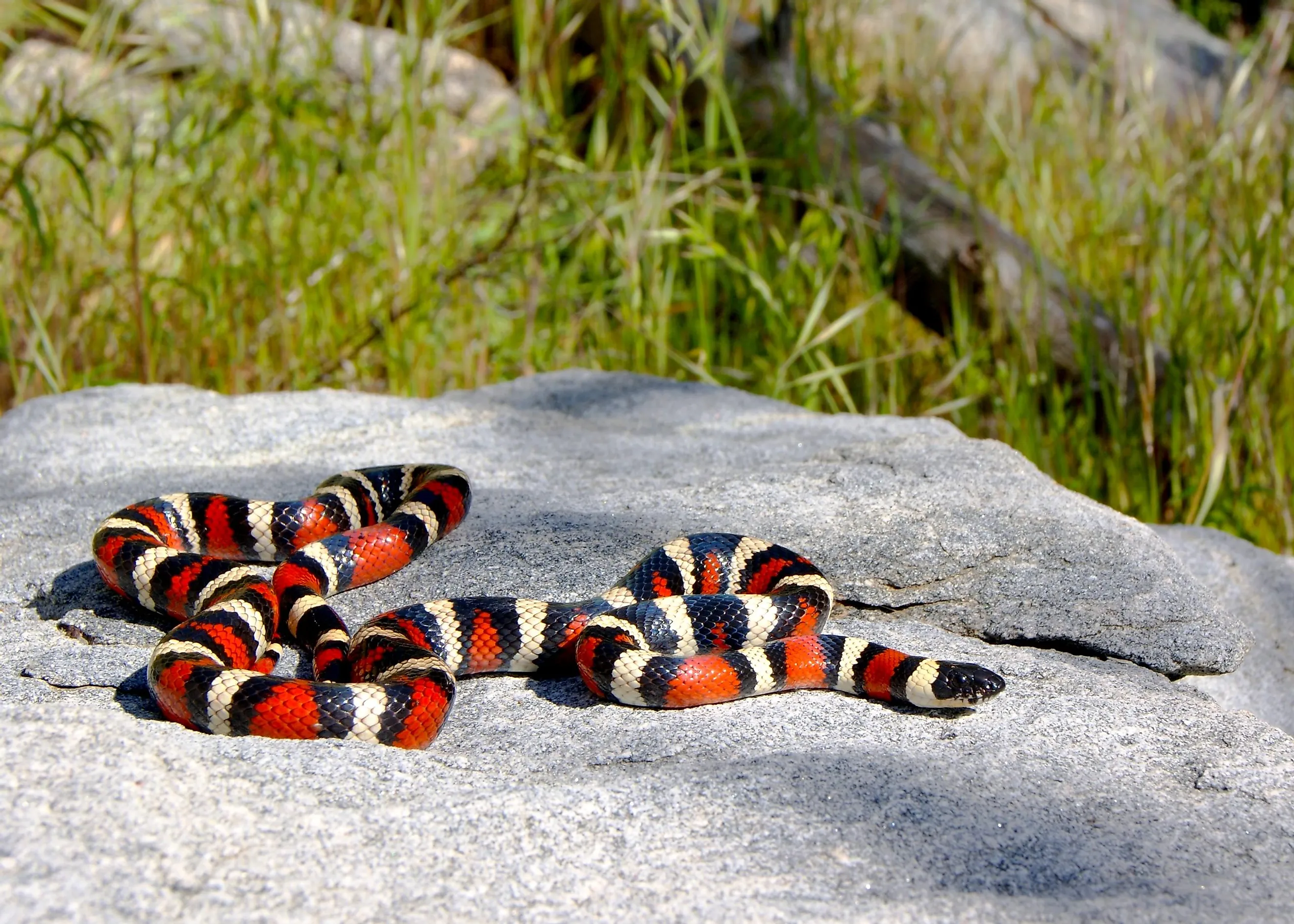
Most Beautiful Snakes In The World
Snakes are polarizing animals. On the one hand (or, rather, lack thereof), these cold-blooded reptiles trigger a primal repulsion in many people, while on the other, they are considered beautiful sentient beings worthy of study (i.e., herpetology), conservation, and sometimes even spiritual reverence. Snakes are far from the insidious beasts they are sometimes portrayed as. They are shy, patient, and adaptive and often symbolize themes such as love, wisdom, and rebirth in religious folklore. This article seeks to celebrate some of the most beautiful snakes across the planet - from San Francisco to Southeast Asia, before attempting to elect the fairest of them all.
What Makes A Snake Beautiful?
Though beauty is subjective, several species of snakes possess physical traits that make them stand above the rest. Like all animal kingdom members, snakes have adapted to their environment over thousands of generations. Striking colors and intricate scale patterns may help serpents camouflage, signal to potential predators that they are venomous (or trick them into thinking they are), aid in thermoregulation, and/or protect their vital organs from solar radiation. Characteristics that are purely pragmatic for snakes sometimes end up being aesthetically pleasing to us humans - which could be said to be a bonus adaptation since we tend to care more about beautiful and majestic animals.
Exploring The Contenders
Blue Coral Snake
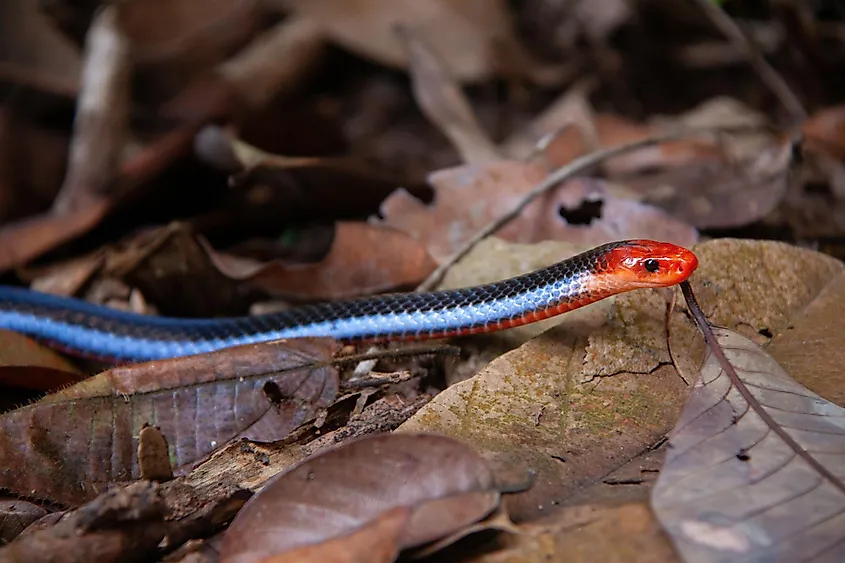
The blue coral snake (Calliophis bivirgatus) is quite a specimen. Its slender, medium-sized body (i.e., upwards of 5.9 feet) is predominantly black or dark blue, with a large stripe of either white or light blue on each side, and it is bookended with a bright red head and tail (and its belly is also red). As the stark coloration suggests, this Southeast Asian (found in the forests of Malaysia, Indonesia, Brunei, Singapore, Thailand, and Myanmar) snake is highly venomous. It uses a specialized cytotoxin to paralyze its prey (i.e., mostly other snakes). With that said, it prefers to flee threatening situations, or it may hold its ground with its red tail held high as a warning sign, so mindful humans need not worry much.
Conservation Status: The blue coral snake is classified as "Least Concern" on the IUCN Red List. However, the current population trend is not known, and the forests that comprise its habitat have been declining in area, extent, and/or quality.
San Francisco Garter Snake
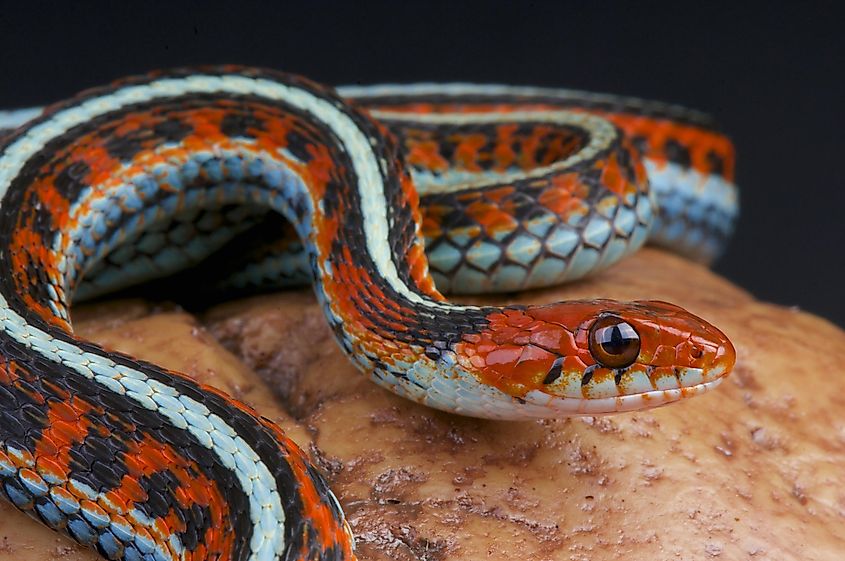
The San Francisco garter snake (Thamnophis sirtalis tetrataenia) got the memo about California's colorful ways. Decorated with a blue or greenish-blue belly, a Golden-Gate-red head, plus red and black stripes along its sides, and a wide pale stripe down the entirety of its back, this small (120 centimeters/47 inches), nonvenomous snake is a delight to spot. Unfortunately, given the fact that it is only found on the San Francisco Peninsula (stretching from the counties of San Mateo to Santa Cruz), such rewarding occurrences are rare.
Conservation Status: Habitat loss/fragmentation, environmental changes, dwindling prey, growing predation, and illegal collection/trade are all to blame for the San Francisco garter snake's decline. It was officially listed as an endangered species on March 11, 1967.
Arizona Coral Snake
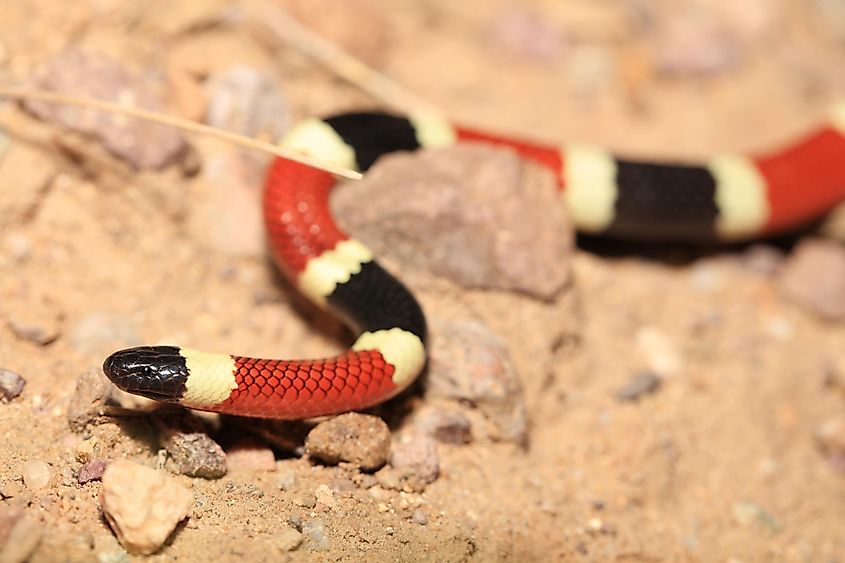
Another stateside favorite is the Arizona coral snake (Micruroides euryxanthus). This short (13 to 21 inches) and slim has a pattern of broad black and red bands separated by narrower increments of yellow or white across its whole body - capped with a black head. Such a dynamic colorway pops against the arid and semiarid landscapes of Southern Arizona, the far Southwest of New Mexico, and also the Northwestern Mexican province of Sinaloa. Though the Arizona coral snake is venomous, it is too small to pose a threat to humans (but this doesn't mean it should be handled haphazardly). Other non-venomous species in the region like to mimic its distinct and defensive aesthetic. As such, a helpful (but imperfect) rhyme exists to help lay people identify which is which: Red on black, friend of Jack. Red on yellow, unlucky fellow. A subtler but more accurate way of spotting an Arizona coral snake is to look for its blunt black head.
Conservation Status: The Arizona coral snake is also listed as "Least Concern." Though precise data is lacking, it is thought that native populations are stable. However, the usual culprits of habitat loss and/or fragmentation due to expanding urban infrastructure are areas of concern for this distinct serpent.
King Cobra
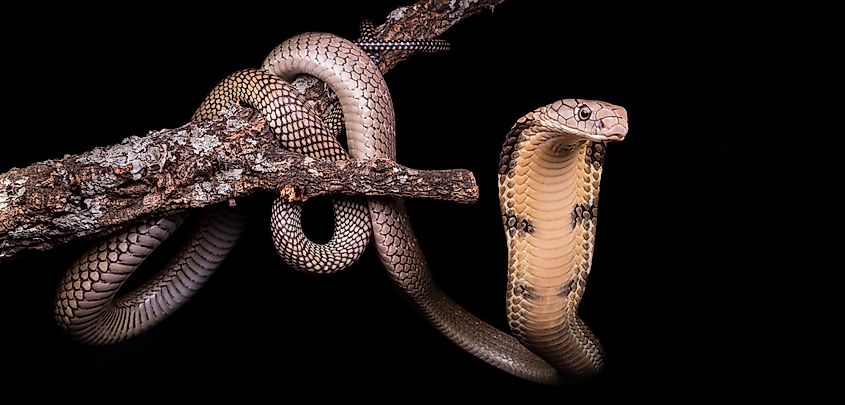
Both daunting and beautiful (for isn't all beauty in some way frightening?), the king cobra (Ophiophagus hannah) stands out in many regards. Able to grow upwards of 18 feet in length, this is the longest venomous snake in the world. When threatened, it can also lift one-third of its body (which can be red, yellow, black, brown, and/or orange, depending on the region) straight off the ground, thereby looking a grown man in the eyes. While doing so, it flares its entrancing hood (which is composed of ribs and muscles rather than skin). This same behavior is displayed during the infamous "snake charming" sessions in South Asia - a controversial practice that, as the Smithsonian National Zoo says, is "often a sad con game in which an exhausted cobra is put on the defensive, yet conditioned (with pain) not to strike the flutist." Finally, king cobras have elaborate dancing rituals when it comes to mating and, when successful, build nests to house their eggs (the only snake species to do so).
Conservation Status: The IUCN Red List categorizes the king cobra as a "Threatened Species." Rapid human population growth and commensurate deforestation in Southeast Asia, as well as the hunting of king cobras for food, medicine, crafts/apparel, and the pet trade, has led to a declining population.
Rainbow Boa
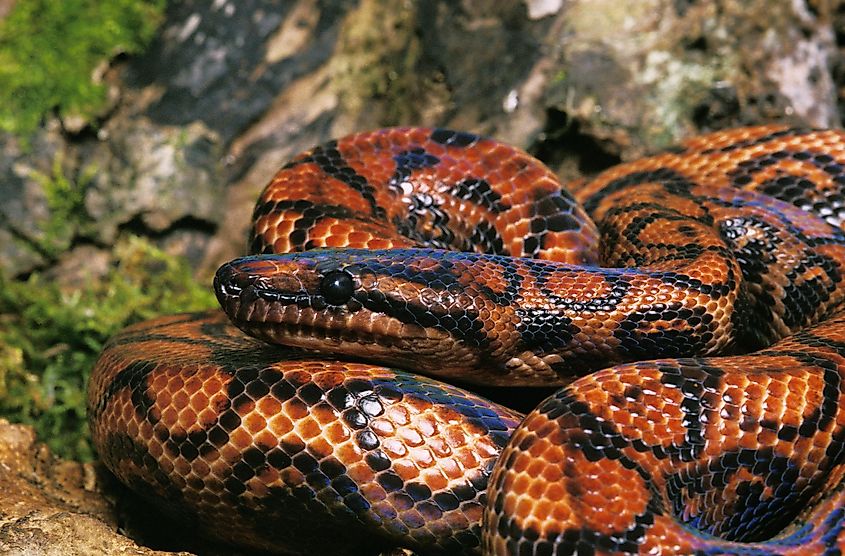
Framed in any light, the solitary rainbow boa (Epicrates cenchria) is a beautiful snake. But in certain settings, a magical twist takes this medium-sized (4 to 6 feet) constrictor to the top of the ranks. This species of boa, which is native to the Amazon River basin (as well as other parts of South America), has a soft brown or reddish-brown base, topped with black and black-rimmed orange blotches. Its tapered head has three black, parallel, lengthwise lines, giving it a distinct appearance. But most intriguing of all is the occasional prismatic effect generated by the tiny ridges on its soft skin - resulting in a radiant mix of blue, green, and purple.
Conservation Status: This iridescent constrictor is categorized as "Least Concern," but once again, with some caveats. The Amazon regularly makes headlines because of significant deforestation (predominantly for agriculture and livestock grazing), and this causes fragmentation of the rainbow boa's mature populations. There are also localized threats relating to the exotic pet trade.
Cultural Impressions
Snakes have slithered their way into some of humanity's oldest tales and are one of the most prolific mythological symbols. From Ancient Sumer, Egypt, Greece, Mesoamerican and Australian Aboriginal oral traditions, and the well-known allegory at the root of all three Abrahamic religions, the Garden of Eden, snakes are often represented as powerful figures. Disparate cultures unanimously identified snakes as special and mysterious creatures that are worthy of timeless legends. Because of their flowing form, inconspicuous (and sometimes capricious) nature, and skin-shedding cycle, snakes have come to represent creation, wisdom, love/seduction, death/rebirth, and moralistic dualism.
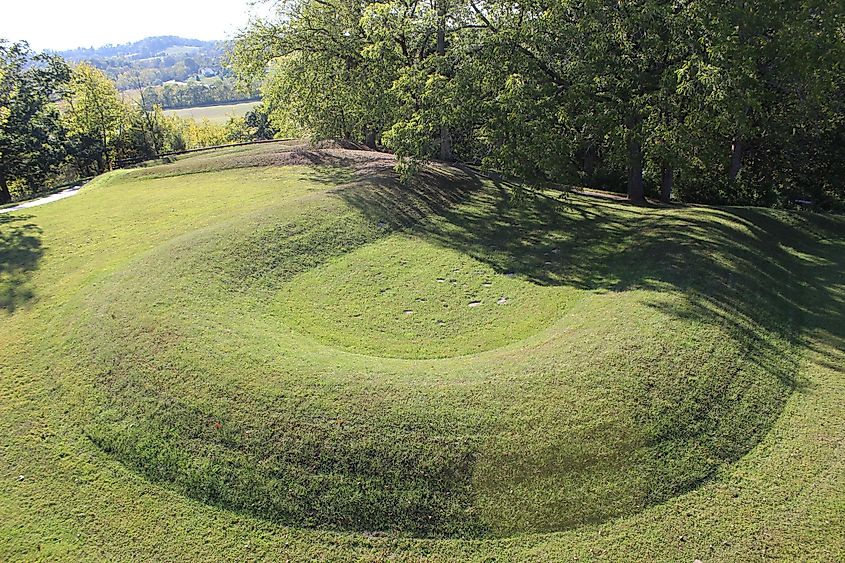
Since an exhaustive list of snake symbolism would be a subject for lifelong scholarship, let's simply cite a few well-known examples. The biggest stateside standout has to be Ohio's Serpent Mound. At 1,348 feet in length, this UNESCO World Heritage site is the biggest prehistoric effigy known to the modern world. Another Native American highlight has to be the Hopi Snake Dance - a rain/fertility ritual that is thousands of years old and continues to be performed by the Northern Arizona tribe to this day (with live snakes).
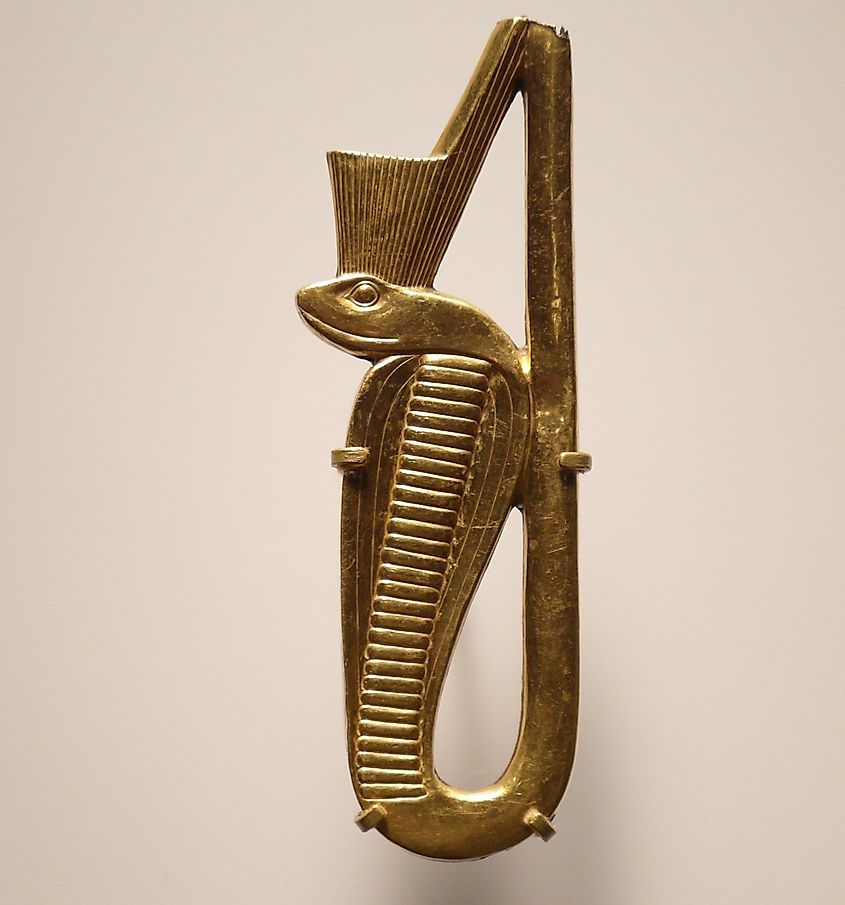
Dropping down to Central America, the famous Mesoamerican creation deity (and bringer of civilization), Quetzalcoatl, was originally represented as a feathered serpent before taking on a more human-like form. In ancient Egypt, Pharaohs would wear the Uraeus (the goddess Wadjet in the form of a cobra figurine) as part of their headdress to demonstrate royal rule. Likewise, the ancient Greek goddess of wisdom and warfare, Athena, is depicted wielding a shield with various images of snakes. Snake symbolism has even penetrated through modern medicine. The Rod of Asclepius (i.e., a snake curled around a staff) can be seen on the uniforms of some emergency service workers and actually stands at the heart of the World Health Organization's U.N flag.
The Human-Snake Relationship
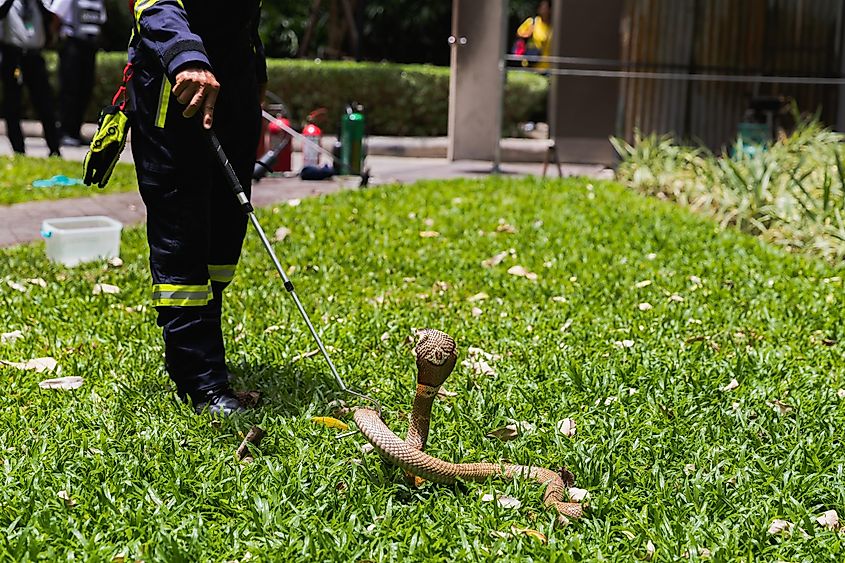
The human-snake relationship is complicated. Even though most snakes are harmless, they still collectively cause over 100,000 deaths each year. Yes, it is important to note that many of these deaths occur in rural parts of developing countries, and therefore, better distribution of existing antivenoms will surely reduce this alarming figure, but that is of little comfort to the people currently affected. Even bites that don't prove fatal can still be exceedingly painful. And so, understandably, a primate-wide fear of snakes is likely to persist for many generations to come. Unfortunately, this widespread anxiety leads to both reflexive killings and active extermination strategies in many communities. Snakes are also hunted, or otherwise exploited, for medicinal purposes, for fashion, and to feed the exotic pet industry (which is what led to the explosion of pythons in the Florida Everglades).
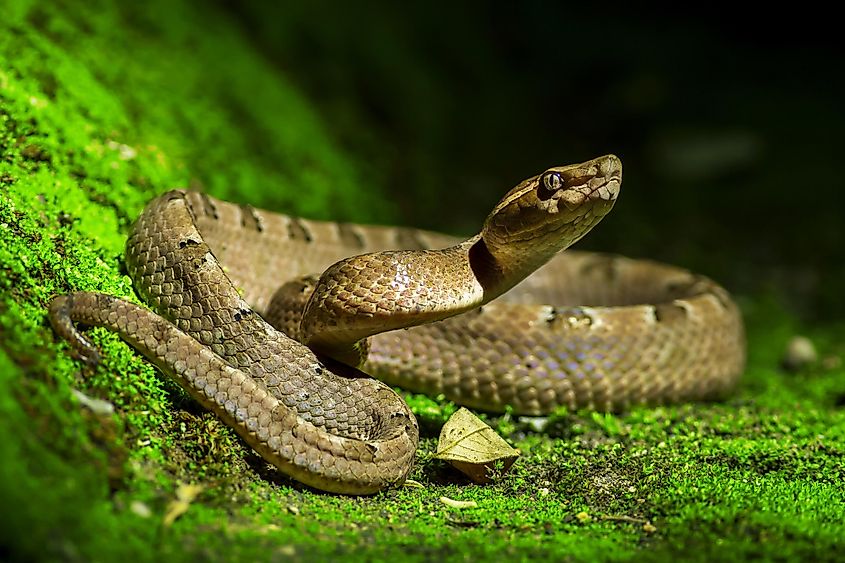
The story is not all doom and gloom. Modern medicine and improved education continue to mitigate the potential risk posed by venomous and large constrictor snakes, and an ever-growing concern for conservation has shone a light on the indispensable role that snakes play in various ecosystems around the planet. Celebrating the superficial beauty of certain species is a fun way to boost positivity towards these misunderstood creatures. But even snakes that lack flashy colors and cool adaptive patterns still have a unique place within the tree of life. Like all animals, they are just doing their best to thrive on this terrestrial spaceship we can home.
So, which snake is the most beautiful in the world? Well, what's the most beautiful painting? Who's the best actor? What's the best song of all time? All I can do is share my personal opinion - and be intrigued by yours. I'm going to go with the San Francisco garter snake. Not only is its appearance stunning, but like a pure diamond, its rarity enhances its appeal. I grew up around garter snakes. They are amazing and underrated creatures, and as an added bonus, they are nonvenomous. San Francisco's subspecies is unlike any snake I've ever seen, and given its shockingly small habitat, few people are likely to get an in-person glimpse. I'm rooting for you, little guy.
Resources for Further Consideration:
Deadliest Snake in the United States











